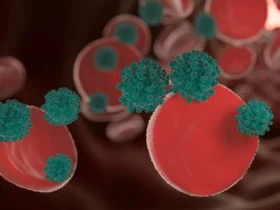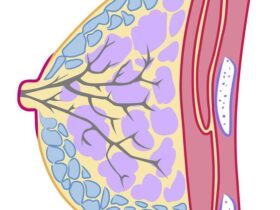Inquisitive Insights: Decoding What Level of Eosinophils Indicate Cancer
Introduction
In the intricate realm of medicine, understanding the nuances of blood cell counts can be crucial in diagnosing various diseases, including cancer. Eosinophils hold a significant role among the magnetic components that make up our immune system. These enigmatic cells are involved in defending our bodies against harmful invaders and serve as potential indicators of underlying health conditions when their levels fluctuate beyond the norm.
Definition: Eosinophils and their Role in the Immune System
Eosinophils, a type of white blood cell that helps our immune system, come from the Greek words “eos,” meaning “dawn,” and “philein,” meaning “to love.”
They are characterized by their distinct granules that contain specific proteins with varying functions. Eosinophils primarily combat parasitic infections, allergies, and other inflammatory conditions within the body.
Our immune system generates cytokines to attract eosinophils to infections and inflammation.
Once there, eosinophils unleash a barrage of potent chemicals stored within their granules to neutralize invaders and minimize tissue damage caused by inflammation.
Importance of Understanding What Level of Eosinophils Indicate Cancer
What level of eosinophils indicate cancer? Monitoring eosinophil levels is crucial for doctors and healthcare professionals as it provides insights into potential underlying health conditions. Specifically regarding cancer diagnosis, abnormal eosinophil counts can serve as red flags indicating further investigation is necessary. Cancerous growths often disrupt the delicate balance within our bodies and can cause aberrant blood cell counts.
Lymphomas and leukaemias have elevated eosinophil levels.
Therefore, understanding the relationship between eosinophils and cancer can aid early detection and prompt appropriate treatment.
Eosinophil levels alone may not indicate cancer, but they can help diagnose it.
Consequently, healthcare professionals pay close attention to eosinophil counts alongside other clinical indicators to assess a patient’s overall health and detect potential malignancies.
Now that we have established the definition and role of eosinophils within our immune system let us delve deeper into their connection with what level of eosinophils indicate cancer. In the next sections, we will discuss normal and elevated eosinophil levels, malignancies associated with them, and how monitoring these levels improves diagnosis and treatment.
Eosinophils and Cancer: An Overview
The Mysterious World of Cancer
What level of eosinophils indicate cancer? Cancer, a word that strikes fear into the hearts of many, is a complex and enigmatic disease. The uncontrolled growth and division of abnormal cells characterize it.
These renegade cells can invade nearby tissues and even spread to distant body parts, causing potentially life-threatening consequences. One peculiar aspect of cancer is its ability to disrupt the delicate balance of blood cell counts within our bodies.
Unravelling the Connection: Eosinophilia Cancer Symptoms
Abnormal blood cell counts often serve as red flags signalling an underlying health condition, including cancer. Eosinophils in cancer, a unique type of white blood cell known for their vibrant pink-stained granules visible under a microscope, have garnered attention about cancer development. While eosinophils normally play a crucial role in our immune system’s response against parasites and allergies, their involvement in what level of eosinophils indicate cancer has intrigued researchers worldwide.
What level of eosinophils indicate cancer? The relationship between eosinophil levels and cancer development is not fully understood but presents an intriguing avenue for investigation. Lymphomas and leukaemias can cause high eosinophil levels.
However, it’s important to note that high eosinophil and cancer counts alone are not definitive proof of cancer presence; they serve as potential indicators warranting further investigation. Researchers have discovered this connection in recent years by exploring various mechanisms through which tumours might influence eosinophil levels.
What cancers cause high eosinophils? Some studies suggest that tumour cells release chemical signals or cytokines that attract eosinophils to the site of malignancy. Once there, these eosinophils cancer may participate in immune responses against tumours or become hijacked by tumour-derived factors contributing to disease progression.
What level of eosinophils indicate cancer? While it remains an ongoing study area with no clear-cut answers, understanding the relationship between eosinophil levels and cancer development holds promise for improved diagnostic approaches and potential therapeutic interventions. As we delve deeper into the intricate dance of eosinophils and cancer cells, we inch closer to unlocking this relentless disease’s mysteries.
Normal Eosinophil Levels vs Elevated Levels(what percentage of eosinophils indicate cancer)
The Goldilocks Zone: What’s Normal?
What type of cancer causes high eosinophils? Ah, the delicate balance of our body’s inner workings—like a symphony, each blood cell plays its part in perfect harmony. Eosinophils, those peculiarly named leukocytes responsible for tackling parasitic infections and modulating allergic reactions, have their sweet spot regarding numbers. In a healthy individual’s blood test results, the typical eosinophils cancer range falls between 0 to 500 eosinophils per microliter of blood.
When Things Go Haywire: Temporary Elevations
Sometimes our immune system just can’t help itself and gets a little overexcited in response to certain triggers—cue the temporary elevation in eosinophil count. Allergies and infections are common culprits that can make these little warriors spring into action like superheroes donning capes.
The body releases chemicals like histamine and cytokines in response to allergens or invading pathogens, which coax eosinophils out of their cosy hiding places within the bone marrow and into circulation. But fret not!
These transient increases are usually harmless and might indicate that your immune system is doing its job effectively. Think of it as your internal security guard beefing up his presence during times of potential threat.
The potential significance of persistently high eosinophil counts as an indicator for further investigation.
Beyond Temporary Peaks: When Persistent Highs Raise Concerns
Does high Eosinophils mean cancer? While temporary elevations in eosinophil count may be as fleeting as a summer breeze, persistently high levels warrant closer attention from medical detectives. Just like Sherlock Holmes would scrutinize every clue, physicians must investigate what could be behind these sustained increases. Persistently high eosinophil counts can be a red flag, signalling an underlying health issue that demands further exploration.
These increased levels can indicate disorders like lymphoma and leukaemia.
Imagine eosinophils as guardians of your body’s well-being.
When they continuously rally in larger numbers than usual, it’s like a distress signal echoing through your bloodstream—a plea for help that shouldn’t be ignored. So, if your eosinophil counts refuse to come down from their prolonged highs, it’s time to team up with your healthcare provider and embark on a journey to unveil the mystery behind these persistent peaks.
Specific Cancers Associated with Elevated Eosinophils
The Elusive Connection Between Eosinophils and Lymphomas
Does low level of eosinophils indicate cancer? A low level of eosinophils, known as eosinopenia, is generally not considered a specific indicator of cancer.
Eosinophils are a type of white blood cell involved in the immune response, and their levels can be affected by various factors, including infections, allergies, medications, and stress. Elevated eosinophil levels may contribute to lymphomas including Hodgkin’s and non-Hodgkin’s.
However, researchers have discovered intriguing mechanisms that shed light on this connection.
Lymphoma cells may release cytokines that cause the bone marrow to generate more eosinophils.
This excess production of eosinophils contributes to higher levels in the blood.
A Diagnostic Clue: Monitoring Eosinophil Counts During Lymphoma Treatment
Eosinophil numbers can be monitored during lymphoma treatment. Over time, Hodgkin’s or non-Hodgkin’s lymphoma patients’ increased eosinophil counts decrease.
In that case, it may indicate that their treatment effectively controls the cancerous cells.
Conversely, a persistent elevation might suggest resistance to therapy or potential relapse. Thus, regular monitoring of eosinophil levels provides valuable insights for healthcare professionals in assessing response to treatment.
Elevated Eosinophils as Potential Indicators of Leukemias
Eosinophils are raised in several leukaemias and lymphomas. Bone marrow abnormalities include AML and CML.
Understanding AML and Its Link to Eosinophilia
In acute myeloid leukaemia (AML), malignant cells rapidly multiply within the bone marrow, disrupting normal blood cell production. As a result, eosinophil levels can become elevated. This elevation is often accompanied by other abnormal blood cell counts, which collectively aid in diagnosing AML.
Chronic Myeloid Leukemia and Its Eosinophil Connection
What kind of cancer causes high eosinophils? Eosinophil numbers rise in chronic myeloid leukaemia (CML). The Philadelphia chromosome causes this slow-progressing condition to overproduce white blood cells, particularly eosinophils.
Monitoring eosinophil levels is essential in tracking the progression of CML and evaluating treatment efficacy.
Conclusion
The correlation between elevated eosinophils and specific cancers, such as lymphomas and leukaemias, provides valuable insights for medical professionals in diagnosing and monitoring these diseases. While the exact mechanisms underlying these associations are still being investigated, understanding how eosinophil levels fluctuate during treatment can guide healthcare providers in assessing therapeutic response.
By closely monitoring eosinophil counts over time, healthcare professionals can make informed decisions about treatment plans and potentially detect relapses or resistance early on. This knowledge brings hope for improved outcomes and enhances patient care in the battle against cancer.




Leave a Reply